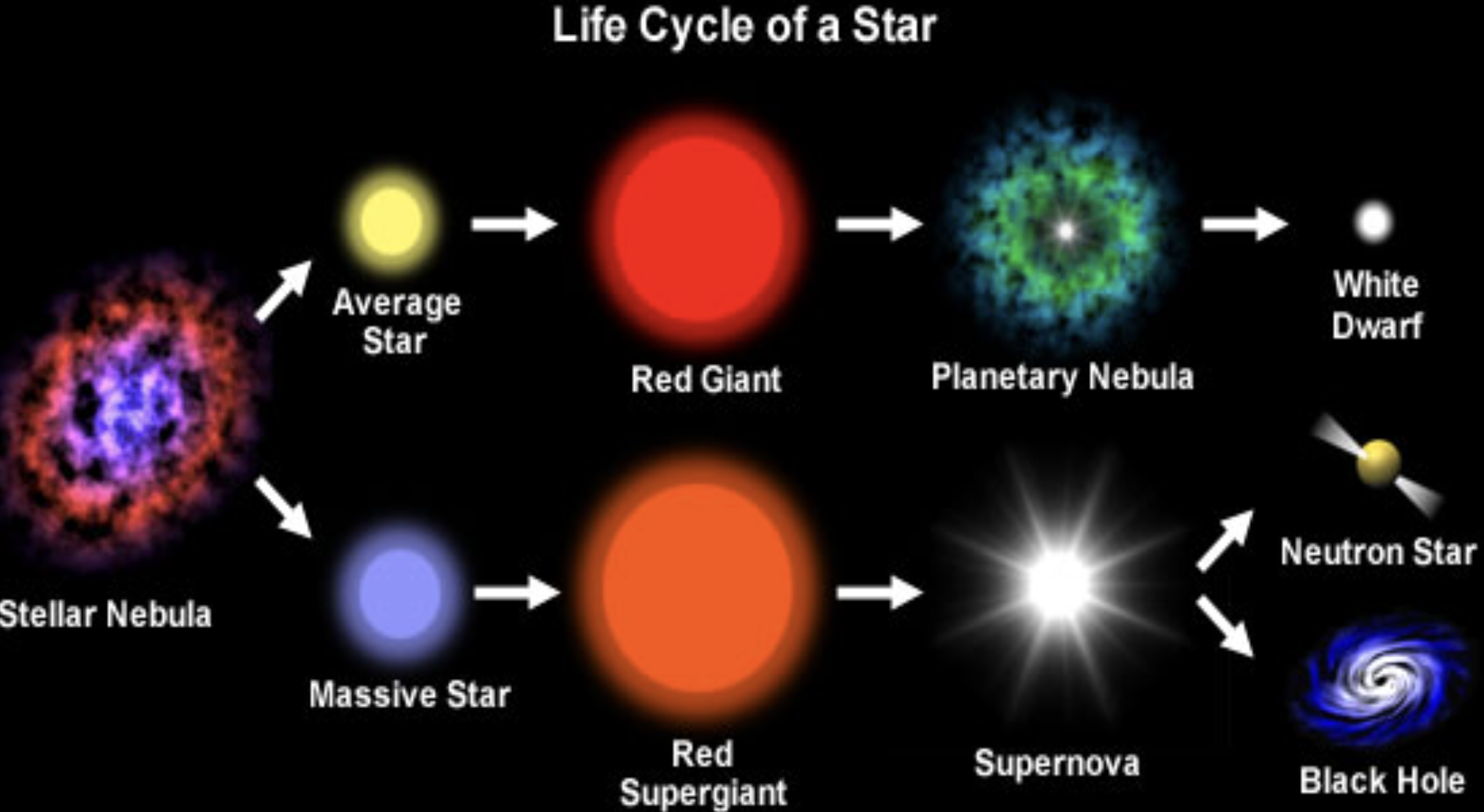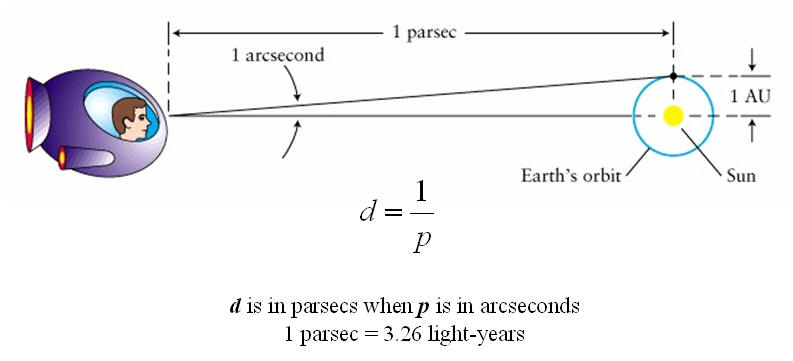E.5.2 Fusion and Stellar Evolution
1/23
There's no tags or description
Looks like no tags are added yet.
Name | Mastery | Learn | Test | Matching | Spaced |
|---|
No study sessions yet.
24 Terms
fusion
each small nucleus has a positive charge so they will repel, to make the nuclei come close enough together that the strong force attracts them, they must be thrown together at high velocities.
thus the matter must be heated up to extremely hot temperatures, almost core of sun or thrown in a particle accelerator
fusion reaction produces a lot of energy per unit mass of fuel
stellar stability
nuclear fusion causes radiation pressure to maintain equilibrium which counteracts the gravitational force from collapsing
Hertzsprung- Russell diagram
scatterplot of stars showing the relationship between star’s absolute magnitudes or luminosities and their stellar classifications or effective temperatures
what is the life cycle of a star
stellar nebula - massive star - red supergiant- supernova - neutron star or black hole
stellar nebula - average star - red giant - planetary nebula - white dwarf

how do stars start their life
in giant molecular clouds called nebulae, if gas is compressed by the shock wave from an exploding star or collision between clouds, gravity overcomes the thermal pressure, and clouds begin to collapse from different-sized stars
as they collapse they emit IR radiation.
gravity keeps collapsing the protostar until the center becomes dense and hot and hydrogen nuclei start to fuse to make helium. This releases energy, as mass of products is less, which mass is converted to energy
the outwards radiation pressure counteracts inwards gravitational pressure. Now main sequence star
nebulae
contain clouds of gas and dust left over after the formation of a galaxy, made up of mainly hydrogen.
temp about 10K, the reason why molecules present
clouds are held together by gravity but kept from collapsing from pressure of molecules moving in random motion.
protostar
a new star
fusion in core of star
hydrogen to helium
sun sized star from red giant turns into what
white dwarf
luminiousty of big stars to main sequence stars
stays constant as they are getting smaller but hotter
small stars to main sequence stars
the core of a small star never gets that hot, so it gets less and less bright as it contracts
main sequence
all main sequence stars have a core that is undergoing fusion from hydrogen to helium. this radiates energy, that causes a pressure that prevents the star from collapsing under the force of gravity
short characteristic of red giant and how are they formes
as rate of fusion slows down, this heats the outer layer, causing them to expand and chnaging the main sequence star into a red giant
a cool star that gives out a lot of energy must be very big. the luminosity 100 times greater than sun. if they are same temp as sun, they must have an area 100 times greater, thus radius 10 times bigger
short characteristic of white dwarf and how are they formed
small hot star, hotter than the sun, but only the size of the earth. they have low luminosity
core is compressed by gravitational force, to a point where electrons can not get closer, thus not decreasing in size but increaisng in temp. the outer layer blows away. the core no longer producing energy, not getting any smaller
large stars
with stars of a mass over 4m, the pressure generated in core is enough to enable carbon and oxygen to fuse into larger elements such as neon and magnesium the
for stars of 8m process continuous until iron is formed - no more energy production, leading to type II superonva and remainder of core is neutron star or black hole
large stars don’t stay long on main sequence, since they are luminous so they use their fuel up faster
type II supernova
from an 8M star iron is fused, and fusing iron with other elements to produce larger nuclei will not liberate energy as it is on top of the binding energy curve
as the core runs out of nuclear energy, the core collapses, increasing the temperature. this allows iron to fuse again, this causes electrons to combine with protons to form neutrons
this continues until core-only neutrons , and there is a collapse between the core and outer layer causing explosion leaving everything but the core (core is called neutron star or black hole)
neutron star or black hole
the core remained from type II supernova
black hole double size of a neutrino star (the core of the star must be more than 3 soalr masses to be black hole)
variable star
changing luminosity , so position on HR diagram not constant. This is due to the change in size of star. As it gets bigger luminosity increases, the variation is called Cepheid variable
arcsecond
how a star’s distance is calculated, the angle from the sun to the earth on one side,
1 arc second = 1/ parsec

What is the evolution of a low mass star
starts at bottom right from main sequence to red giant phase to white dwarf to black star
short characteristics of supergiants
a very big cool star, luminiosity 106 greater than the sun, and radii up to 1000 greater
how to know how long a star will stay on main sequence
how long a star is on the main sequence is dependent on how much hydrogen the star contains and rate of it being used up
when does a core start collapsing
when the rate of fusion gets less, increase in core temperature.
hydrostatic equilibrium
gravitational force equal to nuclear fusion pressure